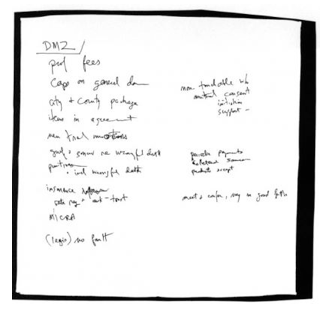Washington, DC—President Jerry Brown today signed landmark Health Security legislation—capping years of gridlock with a compromise package that drew support and opposition from both sides of the aisle in Congress.
At the signings, President Brown was flanked by Congressional leaders from both parties and representatives from AARP, the U.S. chamber of Commerce, the American Hospital Association and the American Medical Association.
The new health law would preserve basic elements of the Affordable Care Act, while adding a number of features designed to correct ACA deficiencies and to contain health care costs and insurance rates. These include a re-insurance pool to mitigate insurers’ exposure to catastrophic health costs, authorization for Medicare to negotiate drug rates with pharmaceutical companies, tort reform for medical malpractices and relief for small businesses.
Not everyone was pleased with the legislation. Vermont Senator Bernie Sanders called it “a sell-out to the special interests” and Texas Senator Ted Cruz called it a “left wing grab bag that will give Washington control of our individual health care decisions.”
“There is something in this law for everyone to love and for everyone to hate,” Brown said, “but we have kept faith with the goal of providing universal health coverage for all Americans without upending our healthcare system.”
Since his inauguration, President Brown has pursued a healthcare fix with single minded tenacity. For months, he has engaged in meetings and shuttle diplomacy with key players from both parties in Congress and with representatives of advocacy and interest groups across the spectrum.
 The final breakthrough came at Washington’s venerable Palm restaurant when the President paid a surprise visit one Wednesday evening. With a glass of wine in hand, he worked the room—chatting with Senators Lindsay Graham and Lamar Alexander at one table and Planned Parenthood President Cecile Richards and Senator Diane Feinstein at another—all the while snagging French fries off his companions’ plates. The outline of the final compromise was sketched out on a napkin (a throwback to Sacramento’s famous “napkin deal”, reached over dinner at Frank Fat’s, the State Capitol’s legendary hang-out, in 1987. by the trial lawyers’ lobby, doctors and the business community; that political armistice paved the way for long-disputed changes in California’s civil liability laws).
The final breakthrough came at Washington’s venerable Palm restaurant when the President paid a surprise visit one Wednesday evening. With a glass of wine in hand, he worked the room—chatting with Senators Lindsay Graham and Lamar Alexander at one table and Planned Parenthood President Cecile Richards and Senator Diane Feinstein at another—all the while snagging French fries off his companions’ plates. The outline of the final compromise was sketched out on a napkin (a throwback to Sacramento’s famous “napkin deal”, reached over dinner at Frank Fat’s, the State Capitol’s legendary hang-out, in 1987. by the trial lawyers’ lobby, doctors and the business community; that political armistice paved the way for long-disputed changes in California’s civil liability laws).
All right, it is fantasy. But this fairy tale scenario illustrates why Jerry Brown won his climate change battle in Sacramento, while President Donald Trump has been losing on healthcare and almost everything else.
Sure, Governor Brown has the advantage of overwhelming Democratic majorities in the Legislature, but his climate change victory was made possible because he was able to enlist moderate Republican votes to offset the defection of several militants within his own party. He also actively engaged and cajoled the business community, organized labor and a number of environmental groups.
Brown, once known as “Governor Moonbeam” used laser focus to get his legislation over the top. Donald Trump could learn a lot from Jerry Brown 2.0. It takes persistence and experience for a chief executive to get things done, not just random tweeting. As the GOP fiasco in Washington clearly shows, a headless horseman inevitably falls off a cliff.

